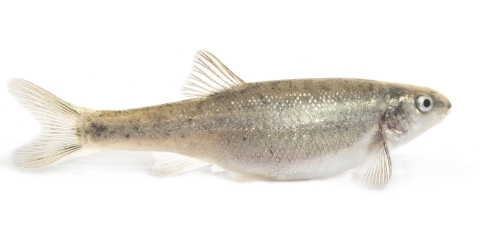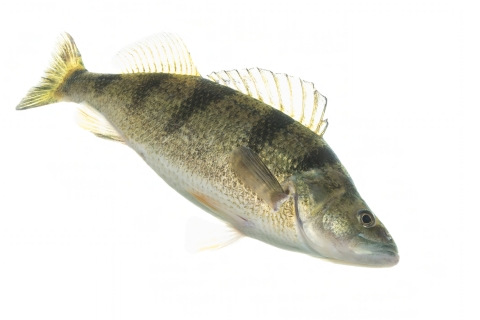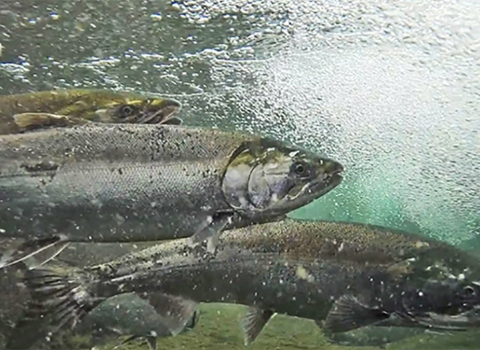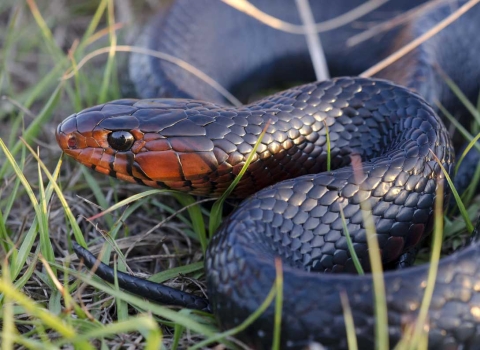As we celebrate the 50th anniversary of the Endangered Species Act, the role of the National Fish Hatchery System as a national leader in the field of captive propagation is more important than ever.
Fish and other aquatic animals need our help. The world’s rivers and lakes once teemed with abundant and diverse communities of fish, invertebrates, and plants. However, aquatic species now represent some of the most imperiled organisms on the planet. National fish hatcheries support conservation by raising aquatic wildlife to recover federally listed threatened or endangered species, improve sustainable recreational fishing, support fisheries that have been impacted by a federal dam, and prevent at-risk species from becoming endangered.
National Fish Hatchery System Distributions
124 million – Fish released by national fish hatcheries.
50 million – Eggs transferred through the National Broodstock Program.
121 – Total number of species raised on national fish hatcheries for release or transfer.
- 70 – Species of Fish
- 45 - Species of Mollusks
- 2 - Species of Amphibians
- 2 - Species of Reptiles
- 1 - Species of Arthropods
Recreational and Subsistence Fish Stocking Program
Many states and Tribes rely on the National Fish Hatchery System to stock lakes and rivers with fish for sustainable recreational fishing. The National Fish Hatchery System works closely with state and Tribal partners to produce and stock fish using advanced genetic tools and techniques to maximize performance and to minimize negative impact on wild fish.
For decades, the Fish and Aquatic Conservation program has partnered with Tribes to stock fish in Tribal waters and provide technical assistance for fish and wildlife resource management needs and on Tribal lands. We pursue these collaborative management efforts not just to fulfill our Tribal Trust responsibilities and to promote sustainable management of important Tribal fisheries and wildlife, but also to ensure the benefits of resource conservation are accessible to everyone.
118 million – Sport fish stocked with states and Tribes to support recreational fisheries
24 million – Fish distributed to Tribal lands
486,000 – Fish distributed to military Lands
60 – Tribes stocked with fish for recreational and subsistence fisheries
Recreational angling from the stocking and release of around 100 million hatchery fish every year supports approximately*:
$1.2 billion dollars in economic output
12 thousand jobs
$88 million in federal tax revenue
$77 million in state and local tax revenue
*From Conserving, Restoring and Enhancing America’s Fisheries and Aquatic Resources: The Economic Impacts of the U.S. Fish and Wildlife Service Fish and Aquatic Conservation Program (2018)
Threatened and Endangered Species Recovery
The National Fish Hatchery System plays an important role in the U.S. Fish and Wildlife’s mission to conserve, protect, and enhance, fish, wildlife, plants, and their habitats. Every year more than 20 million threatened or endangered fish and wildlife are raised on national fish hatcheries for eventual release into a natural setting or to protect the genetic diversity of the species.
20.4 – Million federally listed animals released or transferred from a national fish hatchery.
91 – Species of threatened or endangered plants and animals raised or held on national fish hatcheries.
46 – Species of Fish
27 - Species of Mollusks
6 - Species of Arthropods
6 - Species of Amphibians
3 - Species of Reptiles
3 - Species of Plant
1 - Species of Bird
National Fish Hatchery System Facilities
In additional to a network of hatcheries, the National Fish Hatchery System operates 13 applied science facilities that assist fish production programs by advancing the fields of genetics, physiology, pathology, and nutrition. Our Fish Health and Fish Technology Centers and the Aquatic Animal Drug Partnership Program play leading roles in guiding the science and technology that is foundational to species and habitat conservation in the United States, including assisting with the recovery of endangered, threatened, and declining fish stocks, improving fish hatchery culture technology, and maintaining genetically important populations to protect future biodiversity.
70 National Fish Hatcheries
7 Fish Technology Centers
6 Fish Health Centers
1 Historic National Fish Hatchery










